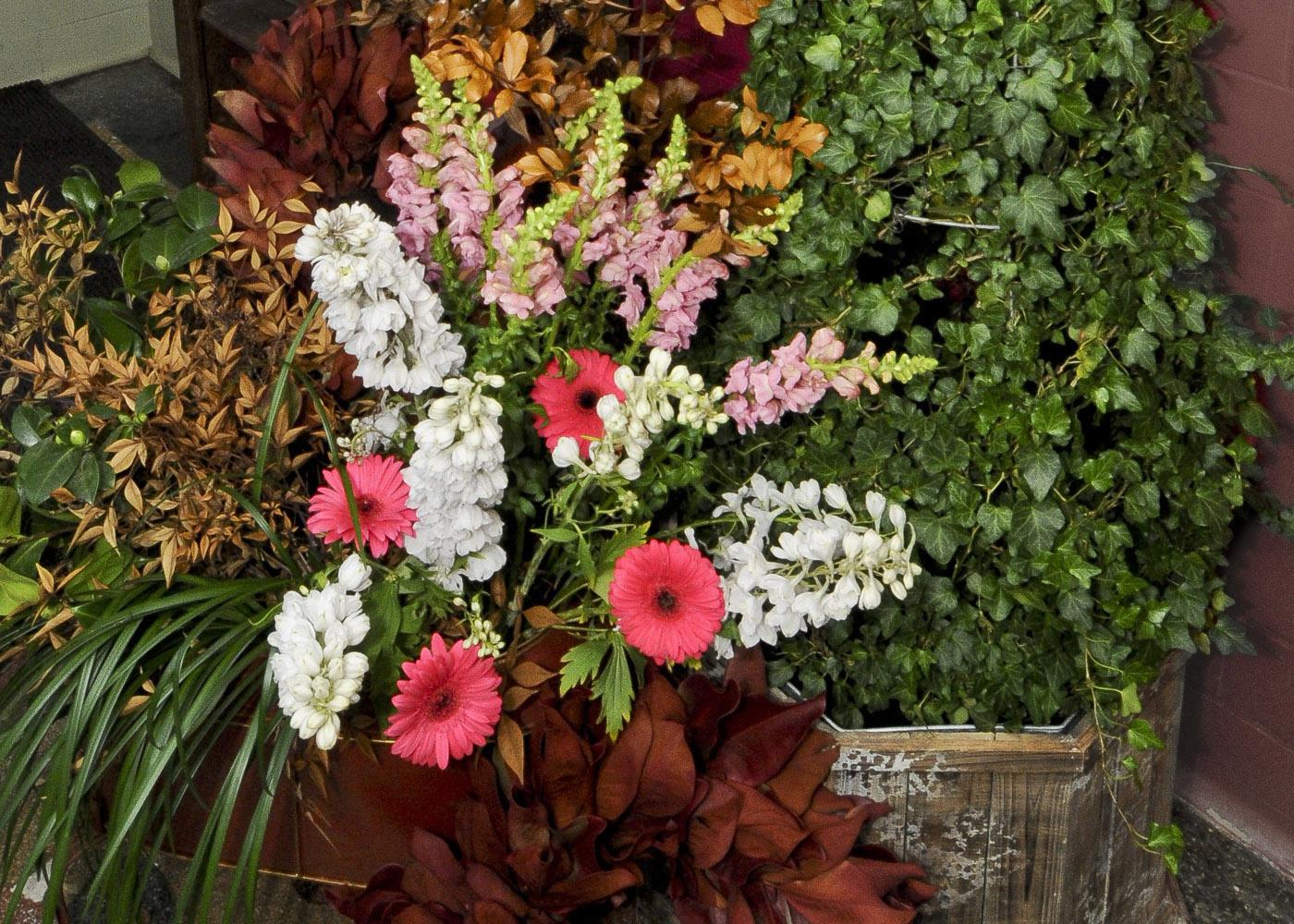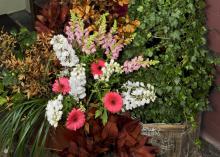Information Possibly Outdated
The information presented on this page was originally released on January 12, 2012. It may not be outdated, but please search our site for more current information. If you plan to quote or reference this information in a publication, please check with the Extension specialist or author before proceeding.
Live plants at wedding bring garden indoors
MISSISSIPPI STATE – Brides can save money and bring outdoor elements inside to create an event that reflects an appreciation for nature and highlights native plants and flowers.
“Mississippi brides have many local plant materials to choose from, and incorporating plants that can be reused or repurposed extends the life of the decorations beyond the wedding day,” said Lynette McDougald, business manager at The University Florist and plant and soil sciences instructor at Mississippi State University. “From magnolias and camellias to sweet gum for fall color, there are many plants available for use in bridal floral design.”
While most couples cannot include 20-foot trees and hundreds of potted plants in the manner of Prince William and Kate Middleton, careful planning can bring the garden indoors any time of year.
“A wonderful choice for winter would be bare-branched deciduous trees,” McDougald said. “The trunks and canopy could be wrapped in reusable lights. Look for even growth if multiple trees are to be used, so the lights can be evenly distributed. Winter months are ideal for planting trees, so the timing is perfect for an environmentally friendly decorating scheme.”
McDougald said brides should work closely with a knowledgeable nurseryman to help select the plants that will be part of the event.
“Some plants can be used as centerpieces and wedding favors, given to family members or planted in memory of loved ones,” she said. “Your florist should be able to help you select seasonal blooming material, as florists have a working knowledge of what is available in a potted presentation year round.”
In spring, bulb crops can be obtained in potted forms, McDougald said. From February to May, brides can expect some blooming shrubs and branches, such as forsythia and spireas.
“Ornamental fruit trees will be making their floral shows. The good news is that throughout these months, something will be blooming,” she said.
When collecting flowers or cuttings from a plant, McDougald said to be selective, not simply about the appearance of the cuttings but also about the plant’s shape: prune evenly from all sides.
“Never cut from only one side,” she said. “But you can collect when it’s convenient for you. In the mornings, the heat of the day has not built up in the plants, but in the afternoon carbohydrate levels are high, which means the plant has food, so it’s a trade-off.
“Collect quickly on hot days and move to a cool location to trim materials for storage, or take a bucket with a small amount of water with you. Don’t collect immature foliage, as new leaves do not hydrate well and will wilt. Flower food can add life to collected plant materials, so use it according to the manufacturer’s directions,” she said.
Using live materials requires planning to avoid damaging the venue by soiling carpets or staining floors with water.
“Plants require strong backs to move them in and out. They have to remain level during installation as to not cause messes. Plastic pots or lined wicker baskets that are watertight can be used in display, or these pots can be hidden with burlap or any textile,” McDougald said.
A nature-based wedding theme can extend beyond the decorations. Writer Amanda Harkness of The Green Bride Guide, a book and website devoted to eco-friendly weddings, shared ideas for unique guest books that reflect green values.
“At one of the Real Green Weddings featured on our website, a couple filled a pretty glass bowl with river stones they had collected and asked their guests to sign the stones instead of using an entire guest book full of paper. They used the river stone display as a pretty piece of decor in their home,” she said. “Another couple had a handmade sign with a drawing of a tree on it. Guests were asked to dip their thumbs in ink and create ‘leaves’ on the tree with their thumbprints. After their prints dried, they wrote their names and messages on the leaves. The bride and groom framed this piece of art and hung it in their home.”
Visit http://www.thegreenbrideguide.com for more green wedding ideas. McDougald may be contacted at info@theuniversityflorist.com.




